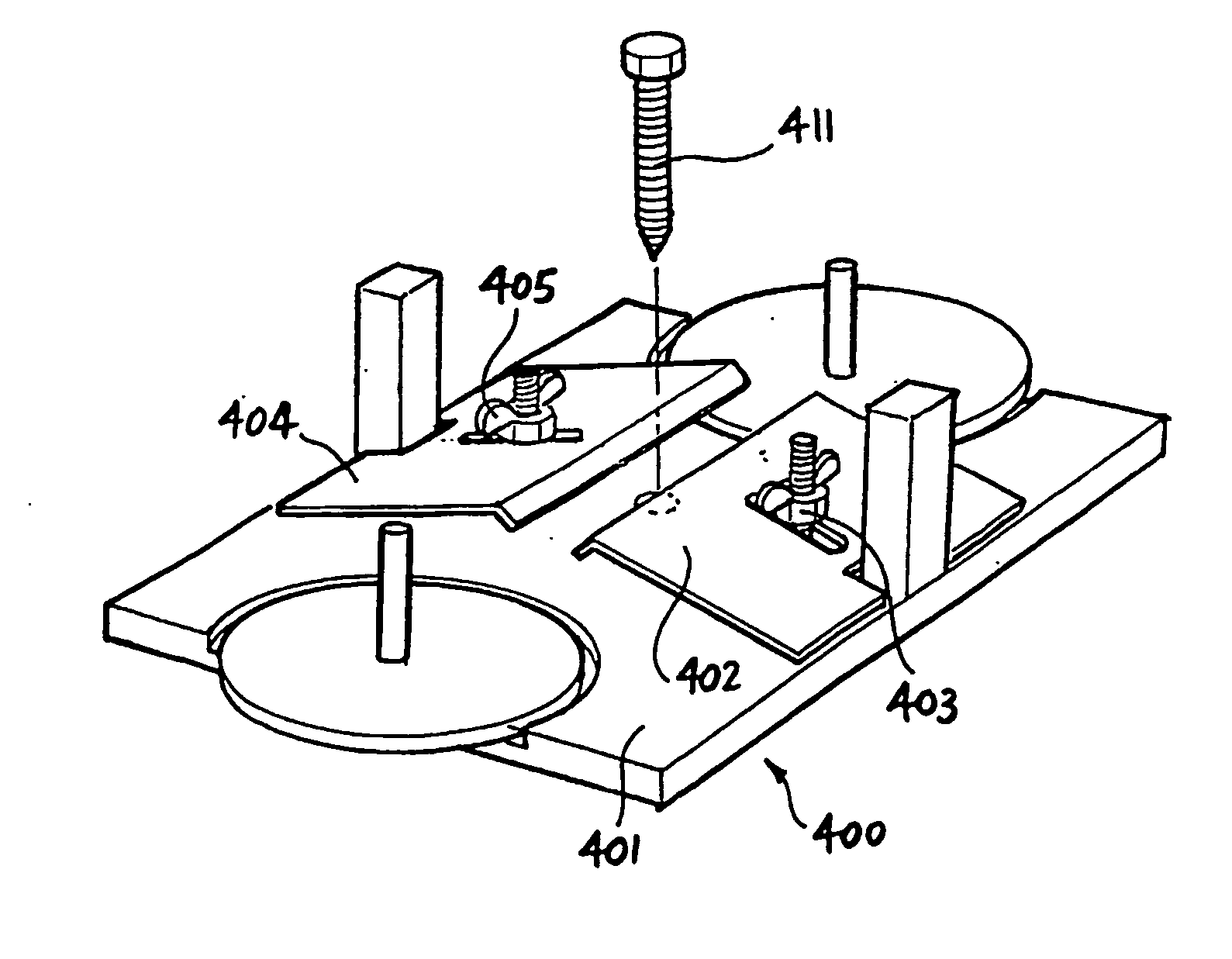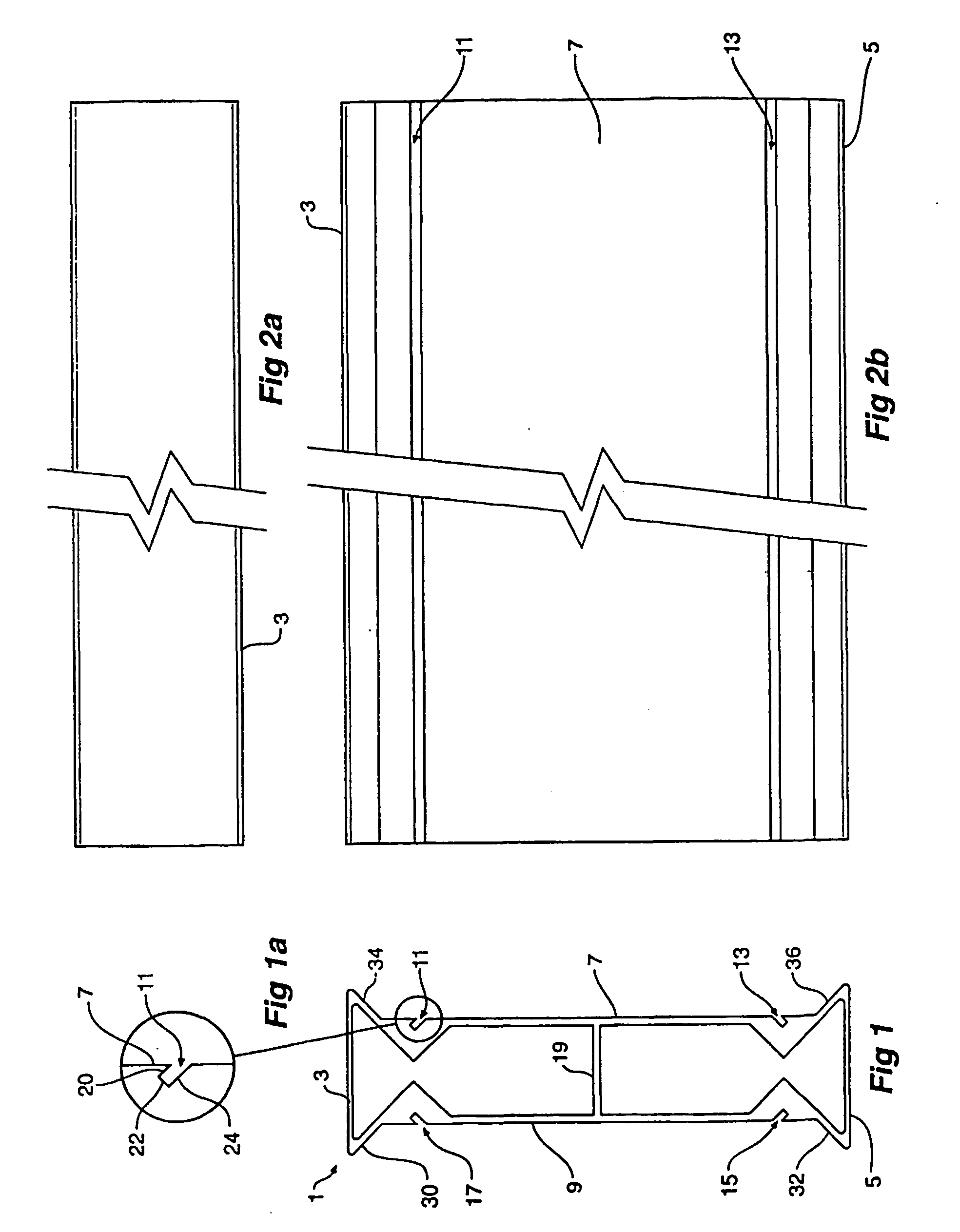Method and apparatus for forming construction panels and structures
a technology for building panels and structures, applied in the field of formwork, can solve the problems of poor finish of construction panels or structures cast in such formwork, inability to use, and inability to meet the needs of construction workers, and achieve the effect of low cost and simple us
- Summary
- Abstract
- Description
- Claims
- Application Information
AI Technical Summary
Benefits of technology
Problems solved by technology
Method used
Image
Examples
Embodiment Construction
[0075] The invention is predicated on the finding that it is not necessary to use a buttress frame in order to secure side-form support members together and support side-forms. This avoids the need to use a support frame that may interfere with pouring or finishing panels. It also avoids the need to cart, haul and fix an excessive number of support members in situations where only one or two panels are to be poured.
[0076] In essence the formwork of the invention uses a number of securing devices in order to secure a base support member to an underlying surface, and allow for the subsequent securing of another support member on top of the base support member. Additional support members (also known as risers) can also be secured to the structure by fixing them to an underlying riser.
[0077] However risers having square or rectangular cross section will not normally allow for the releasable securing of such support members to each other, and to an underlying surface without using a fi...
PUM
| Property | Measurement | Unit |
|---|---|---|
| Length | aaaaa | aaaaa |
| Structure | aaaaa | aaaaa |
| Shape | aaaaa | aaaaa |
Abstract
Description
Claims
Application Information
 Login to View More
Login to View More - R&D
- Intellectual Property
- Life Sciences
- Materials
- Tech Scout
- Unparalleled Data Quality
- Higher Quality Content
- 60% Fewer Hallucinations
Browse by: Latest US Patents, China's latest patents, Technical Efficacy Thesaurus, Application Domain, Technology Topic, Popular Technical Reports.
© 2025 PatSnap. All rights reserved.Legal|Privacy policy|Modern Slavery Act Transparency Statement|Sitemap|About US| Contact US: help@patsnap.com



